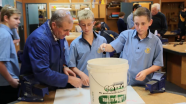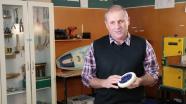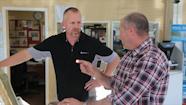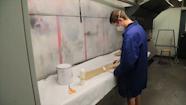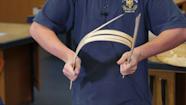Combining knowledge and practice
Steve Andrew talks about the importance of acknowledging where the students are at in their technology learning. He also explains how understanding materials is essential for effective technological practice. Technology traditionally focused on technological practice only – but the technological products component of the technological knowledge strand is an integral part of practice.
Duration: 01:58
Transcript
Our students come from a range of schools within the Waikato. There’s about 20 schools that are contributing schools to our college. Some of them have got technology background from their previous schools, but quite a few of them just come in with very little knowledge.
But I think it is really important to understand that you know the students, and I think it generally goes right across the country, that students entering secondary school are coming in with a very low technological literacy level, and we’ve got to be aware of that so that we know we can pick a really good starting point. And I don’t think we should be afraid to start at a low level. It gives us the awareness that the students have got that knowledge as we are moving on.
For a while now, the focus in technology has been on technological practice, but we’ve got these two new strands now that have been introduced to us and I find that the technological knowledge strand really supports the teaching that I’m trying to deliver to my students.
I focus on technological products, because I believe that the materials component in the products fits really well into what we’re doing. So when I talk to my students, I regularly have examples of products that we talk about the materials and the components and the way that they have been manipulated and that sort of thing.
I was once told, or once read an article, that 90% of product failure is due to materials failure or incorrect materials. And that kind of brought back to me how important materials were to our subject, and I think now that we’ve got that focus with the product strand it gives us some real depth to work on. Where I come from, from a trade background, you know materials and processing and manipulation and that just come naturally, and I think that that is what’s important to deliver to our students.
Curriculum links
The structure of technology in the NZC
Steve talks about technological literacy and strands and components within the technology curriculum. Follow the links below to read more about these aspects of technology.
View a diagram showing the structure of the strands and components within technology and read a brief definition of technological literacy:
Read more about the strands and components Steve has been focusing on:
- The technological practice strand
- The technological knowledge strand
- The technological products component
Indicators of progression and teacher guidance
The indicators of progression provide detailed information about what students need to be able to know and do in relation to the achievement objectives for technology. Teacher guidance for each component is given with the indicators.
Read the indicators of progression and teacher guidance for technological products:
Reflective questions
- What prior technology-related learning and experiences do my students bring to class? How do I go about finding out?
- What opportunities do I give my students to broaden their technological knowledge and understanding through learning in the knowledge and nature strands?
Related resources
Resources
Activities for building technological products knowledge: This teaching snapshot describes how a teacher introduced technological products knowledge into a project that had an existing technological practice focus.
Technology booklet: In this case study a teacher uses traditional Māori products to develop students' understandings of materials and their performance.
Technology in the news
- Scott Carter deconstructs walls to build furniture + sculptures: An interesting concept for the use of wood is described in this news item.
- Canadian Tire builds drivable ice truck: This item explores the properties of ice as a material.
Note that you can search the news section by using the keywords under each item.
More videos
Linking hands-on experiences and understandings
Terry Mitchell, Steve Andrew, and their students show how making whistles from aluminium and from plastic provides a great context for discussing the properties of materials.
Play, experiment, explore
Steve Andrew shares how and why he has the students see, feel, and play with products to develop their understandings in materials.
Finding materials to meet the specs
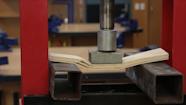

Steve Andrews shares how students identify material specifications in a brief and then test materials to find those that are suitable.
School–industry relationship cuts both ways
Steve Andrew and Terry Rillstone describe the way the relationship between St John's College and The Shop has benefits for them both.
Pushing the boundaries with materials
Steve Andrews describes how his senior students have the confidence to select and work with unfamiliar materials.
Exploring unfamiliar materials
Two year 12 students describe what they know about bamboo and how they are applying this knowledge to their projects.

